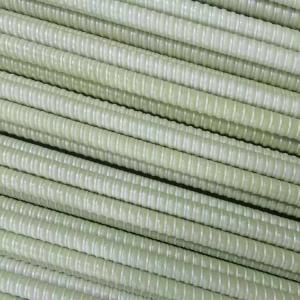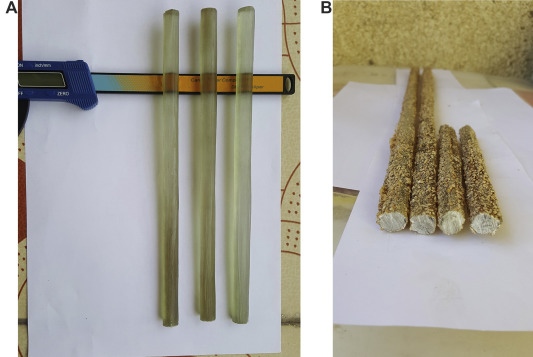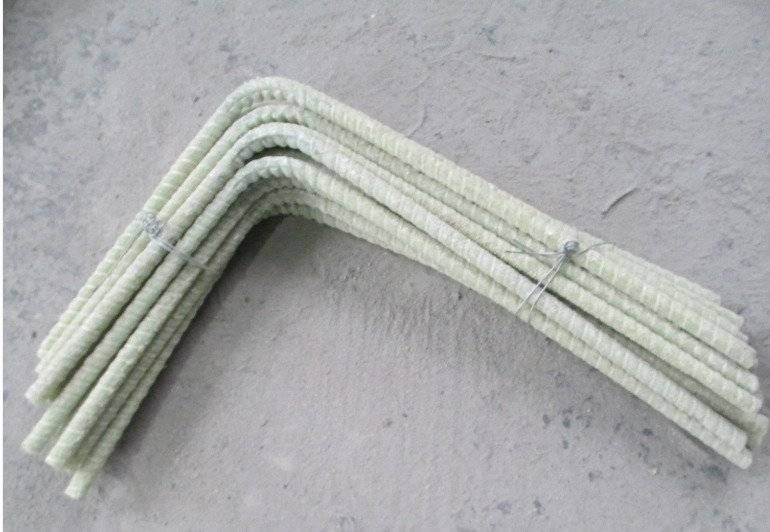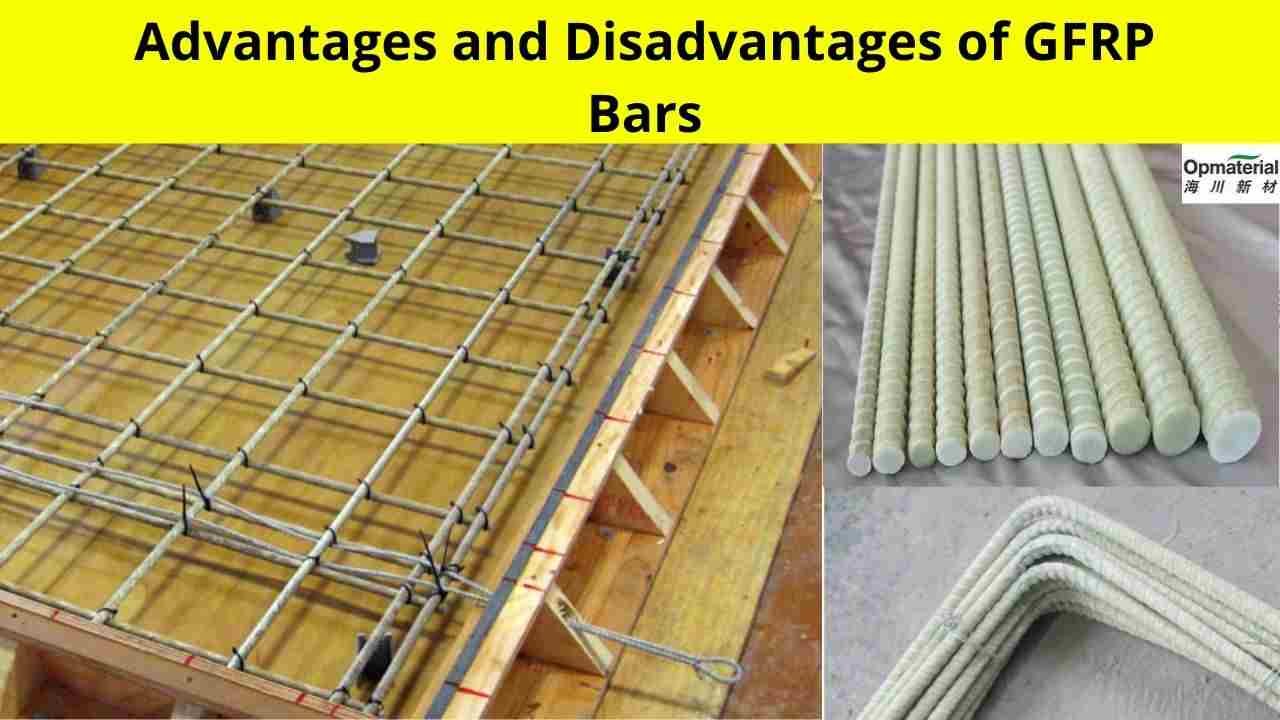In this article, we are going to explain all details about GFRP Bars, the Advantages & Disadvantages of GFRP Bars, Properties of GFRP Bars, application of GFRP Rebar in construction.
So please read the article till the end, and if you found this information then please share with your friends, if you have any queries please comment.
Reinforcement is like a bone of any structural element which resists tensile stress. Steel rebars are the most common type of reinforcement of every RCC Structure. Steel was selected as a reinforcement material due to the strong bonding between steel and concrete.
But nowadays, the increase in prices of steel rebars & cement is very painful for any contractor. Some contractor deducts the quantity of this material during construction due to the high price of such materials.
Also, Some contractors are adopting the best alternative of such material, such as pozzolana cement is the best alternative of ordinary Portland cement which consists of very similar properties to OPC. Also generate less heat of hydration, due to that the initial shrinkage cracks or hair cracks are reduced in concrete.
But, What about conventional Rebar? is an alternative to steel rebar? Most people are searching for the answer to these questions because very less study present in the industry which proves that this material is the best alternative to steel.
So, in this article, we discussed the best alternative of steel rebars, which have very similar properties to conventional steel. Let’s Start
Table of Contents
What is GFRP Bar?

The full form of GFRP Bar is Glass Fiber Reinforced Polymer which is a composite material of longitudinal glass fibers, polyester resins & matrix material.
Nowadays, It’s become the best alternative reinforcing material in RCC Structure due to its Properties and elastic behavior that is very similar to Conventional steel rebars.
GFRP Bars also give enough time to alert before failure which is again similar to steel. The most advantageous feature of GFRP Bars is their corrosion resistance.

GFRP Bars are anti-corrosive materials that allow constructing any element with keeping the minimum cover in severe or extremely severe environmental conditions. GFRP Bars are available in every standard size.
The young’s modulus of gfrp bars is very similar to steel rebar. In research, it’s found that the glass fiber reinforced concrete offers high bending properties as compared to steel rebar (RCC).
Also Read: Construction Procedure of Under Reamed Piles
Properties of GFRP Bars
| Density | 1600 to 2000 Kg/m3 |
| Tensile Strength | 400 to 4200 MPa |
| Fiber Content % by Weight | 50 to 80% |
| Young’s Modulus | 35 to 86 GPa |
| Elongation | 1.2 to 5% |
| Coefficient of Linear Expansion | 6.0 to 10 (10^-6/degree celsius) |
Application of GFRP Bars
The construction application of GFRP Bars is listed below.
- Aerospace and Defence
- Automotive Industry
- Power Generation
- Dock & Marines applications (Seawall, Dock, Harbour)
- Fountains and aquariums
- Cooling Towers
- Mining and tunneling
- Highway Applicatons
- Transport Infrastructure (Bus station, Runway, Highway Pavements)
- Highrise building construction
- Diaphragm Walls
- Drilled Pile Wall
- Soil Nails & earth Retaintion
GFRP Bars found the best construction rebar material for highway, marine & transportation applications.
Also Read: Monolithic Construction Technology
Advantages of GFRP Bars

- High strength to weight ratio
- Anti-corrosive material. It’s good for marine construction Application.
- Increase durability of structure.
- Better stiffness as compared to conventional rebar.
- Gives enough time to alert before brittle or sudden failure.
- Allow to design structural element for high load with keeping minimum sectional area.
- Easy to Use.
- Save maintenance cost of structures.
- The serviceability performance of GFRP Bar is better as compared to conventional steel.
- Electrically and thermally non-conductive. Due to this advantage of GFRP Bars, its become a ideal material for sensitive building such as research facilities, health facilities, Power Plants, Laboratoris, etc
Also Read: What is Tunnel Formwork System
GFRP Bars Vs Steel Bars
| GFRP Bar | Steel Bar |
|---|---|
| Light Weight | Heavy Weight |
| Anti-corrosive | Corrosive Material |
| Less density as compared to conventional steel | High Density as compared to GFRP Bar |
| Ease to transport | Transportation of steel bars is difficult due to the high density |
| Non-Conductive material | Conductive Material |
| Ease in Use | Not too difficult in Use |
| The cover requirement in RCC element is less in severe or extremely severe environmental exposure conditions due to the anti-corrosive properties of gfrp bars. | The cover requirement in RCC Element is more in Severe or Extreme Severe environment conditions due to the corrosive property of steel rebar. |
| High tensile strength as compared to steel rebar | Less tensile strength as compared to gfrp bar |
| Less modulus of elasticity | High modulus of Elasticity |
| Less Bending strength | High bending Strength |
| Less ductility | High Ductility |
| Greater Bond strength as compared to steel rebar | Less bond strength as compared to GFRP Bar |
| Fatigue Resistance is high as compared to steel rebar (Approx 20 times) | Less fatigue resistance as compared to GFRP Bars |
Reference: Replacement of steel rebars by GFRP rebars in the concrete structures
Frequently Asked Questions
What is GFRP Bar?
GFRP Bar is a composite material of longitudinal fibers, Polyesters resins, and matrix material. It is the best alternative to Conventional Steel Rebar.
What is the Price of GFRP Bars in India?
As per indiamart, GFRP Bars price is 150rs/kg in India. Its changes as per location and traders.
What is the full form of the GFRP Bar?
Full-Form of GFRP Bar is Glass Fiber Reinforced Polymer Bars.

I am a Professional Civil & Structural Engineer having more than 4 years of experience in Engineering, Procurement and Construction industry. Here i sharing the latest updates of EPC Projects and Construction News.

